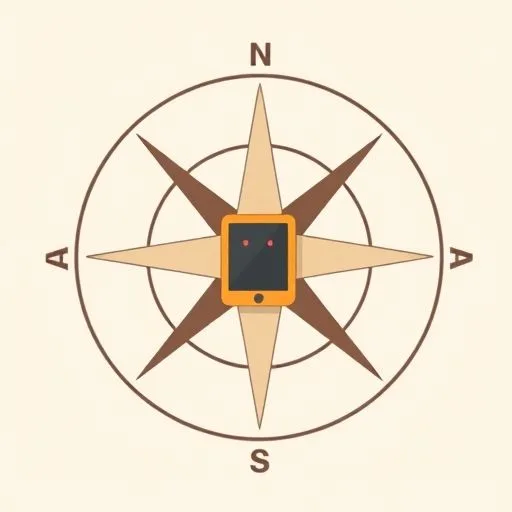
Remember the first time your little one’s eyes lit up playing with blocks? That spark is exactly why families need an AI strategy. I had one of those moments recently, but it came from the most unexpected place: reading about how corporate boards and executives are wrestling with AI strategy. And it hit me—we’re all facing the same fundamental challenge!
How Does Innovation Meet Heart in Family AI Strategy?

In those corporate boardrooms—and around our kitchen tables (I admit, I even caught myself jotting notes on a napkin!)—we’re all navigating this beautiful tension between excitement and caution. The articles talk about boards looking at the ‘big picture’ while executives focus on specific functions. Isn’t that exactly us as parents?
We’re simultaneously thinking about the big picture—what kind of human being are we raising?—while also dealing with the daily specifics: ‘How much screen time is too much?’ or ‘Which educational app actually works?’
I remember last week, watching my daughter and her friends creating elaborate stories using one of those AI-assisted drawing apps. Their laughter filled the room as magical creatures emerged from their imaginations, slightly enhanced by technology. Part of me swelled with pride at their creativity; another part wondered about the balance between artificial assistance and authentic creativity. That’s our parenting boardroom moment—we’re all management and directors rolled into one, constantly evaluating, adjusting, and striving for that perfect alignment between innovation and values in our family AI strategy.
What Is the Best Way to Build a Family AI Foundation?

The research shows that 85% of organizations will have formal AI guidelines by next summer—but what about our families? We don’t need binders full of policies, but we do need intentionality. It’s like planning a family trip: you want spontaneity and adventure, but you also need some guardrails to keep everyone safe and happy.
Our approach? We’ve created what I call ‘exploration zones’—times and spaces where technology enhances rather than replaces. Like when I pack extra apples for our walk to school, we pack curiosity into every AI experiment. Saturday mornings might involve using AI to identify the birds we spot in our neighborhood park, while weekday evenings are strictly for hands-on play and real-world connection. It’s not about strict rules, but about creating a framework that allows curiosity to flourish within boundaries that protect childhood magic.
The corporate world talks about infrastructure deployment; we’re talking about emotional infrastructure.
How do we prepare our children’s hearts and minds for a world where AI is everywhere? For us, it starts with conversations—simple, age-appropriate chats about how technology works, why we make certain choices, and always, always emphasizing that no machine can replace human connection, creativity, or compassion. This family AI strategy helps us stay grounded.
How Can Families Work With AI Like a New Member?

One director perfectly captured it: learning to work with AI is like learning to work with a new colleague. Well, in our household, we’ve adopted that mindset—AI is like a quirky, incredibly smart family member who needs guidance on our values and boundaries!
When my daughter asks Siri a question, we talk about how to ask good questions and how to evaluate the answers. When we use an educational app, we discuss what the technology is doing and what her brilliant mind is adding to the experience. This isn’t about fear; it’s about empowerment—teaching her to be the director of her technology use rather than just a consumer.
And just like those corporate boards are asking ‘How are we making sure our people are ready?’ we’re constantly asking ‘How are we preparing our daughter for this new world?’ The answer isn’t in more apps or stricter limits—it’s in building her critical thinking, her empathy, her resilience. Those are the future-proof skills that no AI can replicate, and they’re central to our family AI strategy!
What Are Key Takeaways for Your Family AI Strategy?

After diving into all this research and reflecting on our own journey, here’s what our ‘family board’ has decided:
First, we’re embracing AI in education as a tool, not a teacher. It’s the difference between giving our daughter a map and teaching her how to navigate—both are valuable, but one empowers her for any journey.
Second, we’re focusing on ethical awareness from the start. Just as corporations are concerned about fairness and transparency, we’re having simple conversations about how technology should be fair and kind to everyone.
Most importantly, we’re remembering that the goal isn’t to raise the most tech-savvy child—it’s to raise a curious, compassionate human who knows how to use technology to enhance her life without letting it define her.
And just like that block tower our kids build—the one that wobbles but somehow stays standing—our family AI strategy builds layer by layer: a dash of curiosity, a pinch of boundaries, topped with unshakeable connection.
The corporate world is just beginning this journey, but as parents, we’ve been doing this all along—balancing innovation with values, excitement with caution, future possibilities with present joys. So, what’s your family’s next move in this adventure?
Source: How Boards And Executives Can Work Together On AI, Forbes, 2025/09/22
